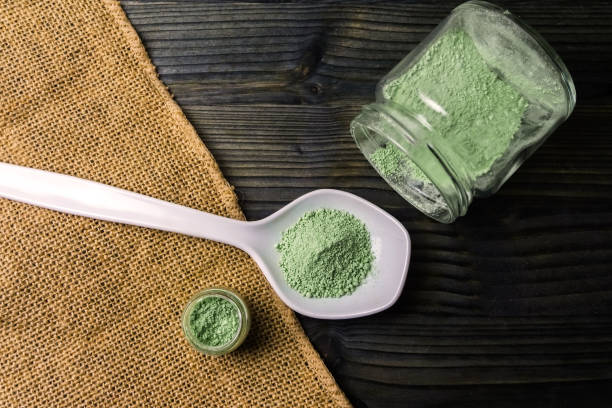Mitragynine is the plant Mitragyna speciosa Korth’s primary active alkaloid component. Historically, M. speciosa has been used in Southeast Asia as a stimulant and a treatment for various ailments. Opioid receptors, neuronal Ca2+ channels, cAMP and CREB protein production, and the descending monoaminergic system all have a role in pharmacological effects. Mitragynine was a competitive antagonist at kappa-opioid receptors, whereas it was a partial agonist at delta-mu-opioid receptors, with very low efficacy, at mu-opioid receptors. Mitragynine has now been addictive in animals in tests, but only at large dosages.
Only minimal adverse effects are reported by human users in nations where the drug is often used in traditional contexts. The use of Kratom and mitragynine may improve strength and stamina. Kratom’s alleged ability to substitute opiates in chronic users is critical in its popularity. There are now fascinating solutions for treating opiate addiction based on the Kratom plant preparation and mitragynine extracted ingredient. The DEA declared in August 2016 that Kratom and its mitragynine components would be classified as Schedule 1 prohibited narcotics.
Contents
Form In The Physical World

Its dark green, oval, or acuminate leaves may measure up to 180 millimeters long and 100 millimeters wide on the Mitragyna speciosa tree. If you want to get the most out of your plant’s leaves, it is recommended that you look for red veins. There is a significant difference in the weight of fresh and dried leaves. Up to 120 seedlings, yellow and globular flowers may be seen on each tree. Many tiny flat seeds are found in the fruit’s capsule-like structure. Dried leaves with a light to deep green color that has been crushed or powdered make up most Kratom for sale online in the market.
Applicability
Kratom is usually eaten or brewed into tea using the leaves. Sweeteners like sugar or honey may be used to mask the tea’s bitter taste and help extract plant alkaloids. On rare occasions, dried leaves are burned.
The leaves are routinely trimmed of their veins and sprinkled with salt before consumption to prevent constipation. You can only take in what you’ve masticated. Those addicted to chewing should drink warm water, coffee, tea, or palm sugar syrup after eating. When Kratom is unavailable, the leaves of the Mitragyna javanica (also known as Mitragyna parvifolia) may be replaced.
4×100 is the name given to homemade ice-cold beverages, popular among young Muslims in southern Thailand because of their purported capacity to mimic the impact of consuming alcohol. They include ice cubes, kratom leaves, caffeine-rich soft drinks, and cough medicines containing codeine or diphenhydramine as the three main components of their formula.
Why Is It In My Kratom?
Kratom products include a variety of phytochemical components in varying amounts, making it challenging to conduct pharmacological assessments. Human clinical studies are few and far between. While modest dosages of Kratom may offer a “cocaine-like” rush, higher amounts can have sedative-narcotic effects “like morphine.”
The positive and stimulating effects of a few grams of dried leaves last for one and a half hours. Stimulants like this have been demonstrated to boost a person’s capacity to function at their best and even increase their propensity for sexual behaviors. Flushing and normal or somewhat dilated pupils are the most common findings. For long-term kratom users, weight loss, exhaustion, and constipation are frequent side effects. No specific pharmacological mechanism has been identified for how stimulant outcomes are delivered.

Sweating, nausea, and dysphoria may occur when 10–25 grams of dried Kratom leaves are taken, but these side effects are swiftly replaced with sensations of well-being, happiness, and a dreamy mood that can persist for up to six hours after that. There is evidence of miosis (contraction of the pupils).
Kratom’s main alkaloids, mitragynine, and 7-hydroxy mitragynine are opioid receptor agonists that are selective and complete (MOR). Kratom alkaloids may be countered by naloxone, which is an opioid receptor antagonist. Additionally, 5-HT2a and 2-adrenergic receptors and neuronal Ca2+ channels may play a role in mitragynine’s distinct pharmacological and behavioral effects.
Codeine has been shown to have similar antinociceptive and cough-suppressant properties in animal investigations. 7-hydroxy mitragynine was more potent as an analgesic in mice than morphine, even when taken orally.
Kratom is somewhat toxic to animals. Naloxone-induced withdrawal symptoms and 7-hydroxy mitragynine tolerance were the outcomes of long-term usage.
Withdrawal symptoms in humans are mild and usually go away within a week or two after the drug is stopped. Side effects of this medicine include anxiety and agitation, restlessness, nausea, sweating, muscle pain, jerky limb movements, tremor, hallucination, and hallucination-like symptoms. Other symptoms include hunger, exhaustion, and a lack of motivation. Anxiolytics, antidepressants, and nonsteroidal anti-inflammatory medications may all be used to treat anxiety and depression if required.
By hydrolyzing the ester of the side chain and O-demethylating the methoxy groups, mitragynine is metabolized in the body. They also go through oxidative or reductive processes, the formation of glucuronide and sulfate conjugates, and other chemical modifications. A guy who died after ingesting too much propylhexedrine and Kratom had a broad range of post-mortem mitragynine concentrations.
When used with other medications, Kratom may cause side effects. Adverse drug interactions have been reported with Kratom tea and other medications such as carisoprodol, modafinil, propylhexedrine, and Datura stramonium. An unfortunate incident occurred in the United States when fentanyl, caffeine, and morphine were sold as herbal medications.
Conclusion
The stimulant/sedative/narcotic/psychoactive actions of Mitragyna speciosa are unique among the six Asian and four African species of Mitragyna. As a cough suppressant, antidiarrheal and antidiabetic drug, an intestinal dewormer, and wound-poultice, Kratom is utilized in South East Asia. For the self-treatment of chronic pain and opioid withdrawal symptoms, and as a substitute for opioid analgesics, anecdotal reports of kratom formulations’ usage beyond Asia have been documented.
However, Kratom and its alkaloids have not been certified in contemporary medicine. Kratom or its purified components may have medicinal promise in treating pain, depression, and opioid withdrawal symptoms.

